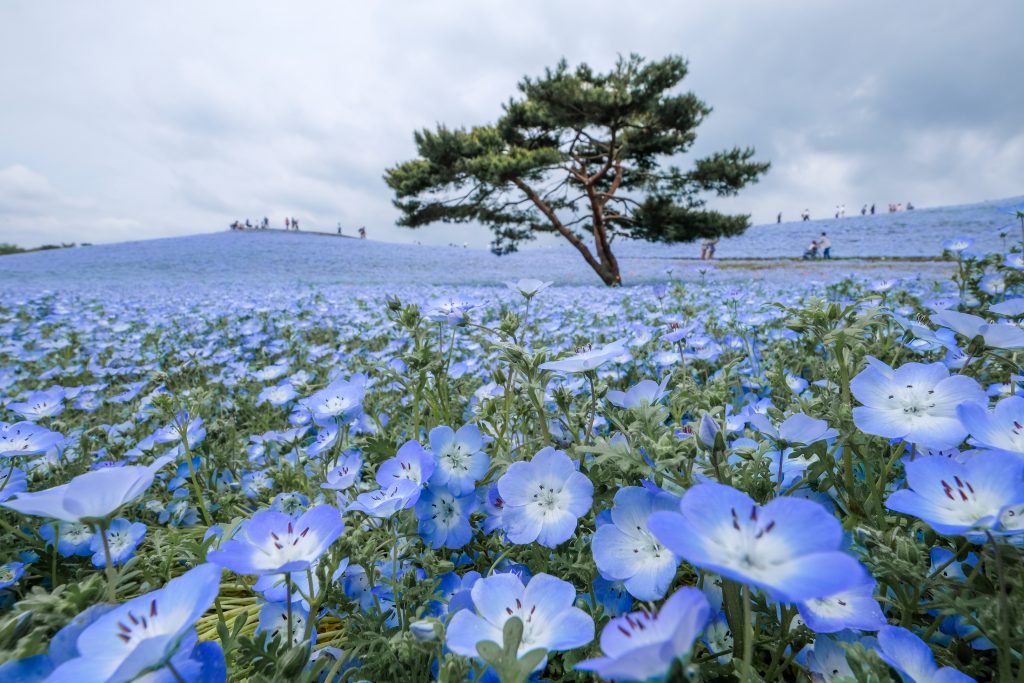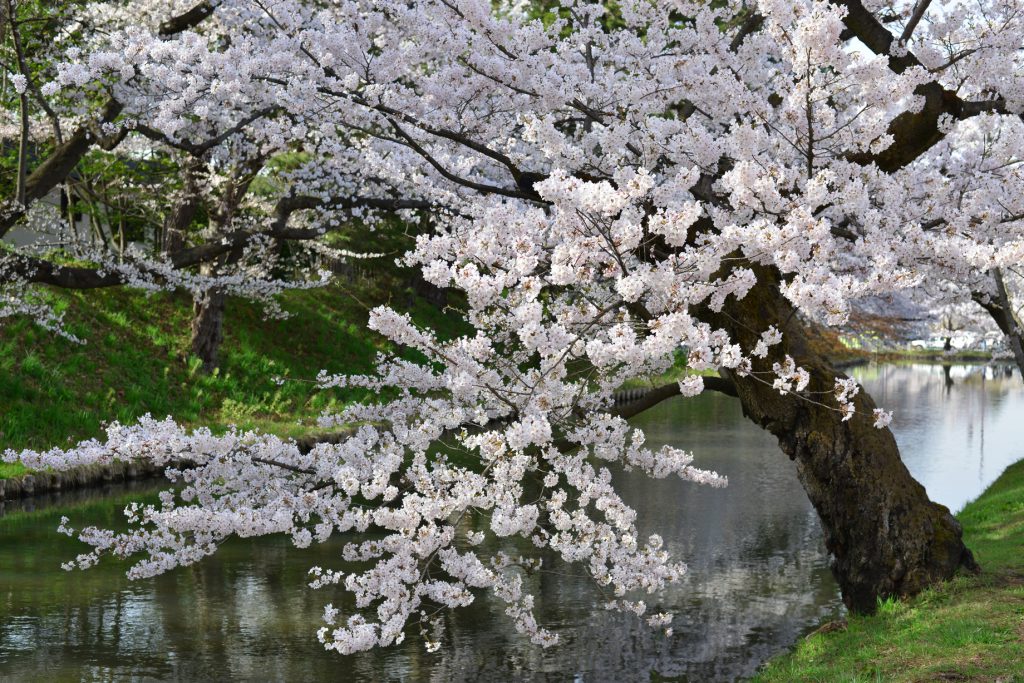Phuong Nguyen
As a distinct island nation situated entirely in the Northern Hemisphere, Japan boasts an ideal climate with four distinct seasons. This makes it a land of a thousand flowers. Flowers spread across the territory, blossoming on a grand scale. With each returning spring, their beauty resonates.

Vibrant spring beauty
Most tourists who visit Japan in the spring focus on cherry blossom (sakura) festivals. Indeed, Japanese cherry blossoms stand out both in quantity and quality. However, the Land of the Rising Sun is home to dozens of other flower species that bloom simultaneously and brilliantly as spring arrives.
Cherry blossoms bloom across Japan from late March to the end of April, alongside ume and plum blossoms, which bloom at the same time. In late April and early May, rhododendrons of various colors bloom vibrantly on hillsides and in parks. Nemophila blossoms are abundant on eastern shores, spreading over the hills. This flower displays a vivid blue during the day and turns deep purple as the sun sets. Wisteria are also noteworthy during this period. Japanese displays of wisteria are works of art, crafted by nature and Japanese gardeners. Japan boasts many wisteria trees that are over 200 years old, including some aged 300 to 400 years old, located in Ashikaga Park in Tochigi Prefecture.
In May, it’s time for colorful camellias, light purple irises, and yellow daffodils, which bloom in parks, along roadsides, and in the yards of country homes. At this time, rapeseed flowers paint the embankments bright yellow, blending with white-pink peach blossoms and the occasional red rhododendron or camellia bush, creating an exquisite tapestry of colors.

At the end of spring, when the cherry blossoms have fallen and the wisteria branches stand bare, tulips begin to bloom across the vast fields that stretch for kilometers in the Toyama region and especially on the island of Hokkaido. Thanks to these regions’ cold climates, spring comes late but offers incredibly distinctive experiences. When tourists tire of gazing at the distant tulip fields, they should explore the area’s historical botanical gardens. Here, numerous ancient rose bushes start to bloom, flaunting their elegant beauty. Often imported from Europe, roses began to be widely cultivated in Japan during the Meiji era. Large gardens in Yokohama, Tokyo, and Tochigi still preserve rose bushes that are nearly a century old. Rugged and thorny, these plants spread their branches over tens of meters, creating a canopy of roses suspended in the air, with a variety of species and colors. Imagine sitting in such a vibrant space and sipping a cup of tea or coffee, or enjoying a cool ice cream – it’s as if spring rushes into one’s soul.
Sincere and enthusiastic hosts
Every spring, as flowers tell their own stories, Japanese people combine flower-viewing with seasonal tourism. They are renowned for their attention to detail and thoughtfulness. Their approach to tourism is equally impressive and uniformly executed across the country. Each region boasts distinctive flowers. Depending on the time, each prefecture organizes a flower festival on the days when the flowers are in full bloom. The Tourism Bureau is the managing and coordinating body, while local governments mobilize resources to make the most of their province’s natural treasures.

We visited Tochigi Prefecture to marvel at the illuminated wisteria at night, journeyed to Hitachi Seaside Park in Ibaraki to admire nemophila flowers covering the hills, and stopped by Toyama Prefecture to witness tulip fields intermingled with rapeseed blossoms. Every destination offered timely information on the blooming schedule and directions for travel. Some destinations even provided free direct buses from the train stations to the flower-viewing sites. Their primary revenue comes from accommodation taxes and the sale of food, drinks, and souvenirs. Indeed, it’s an effective and refined approach!
The Japanese have a unique talent for transforming simple and small things into fascinating stories that intrigue and delight visitors from afar. During the flower season, not only did we enjoy the blooms and the serene atmosphere, but we also had the opportunity to sample a variety of food and drinks made from flowers. Examples include mochi rice cakes decorated with cherry blossom petals, ice cream infused with natural purple dye and the fragrance of wisteria, and other visually appealing pastries and sweets. The Japanese tourism industry knows how to make a visitor’s journey fulfilling through each region’s distinctive cultural aspects. The human element in their attentive service chain is especially noteworthy, demonstrated through enthusiasm, sincerity, and a welcoming spirit. Japan truly deserves its status as one of the world’s most worthwhile destinations. Travelers should experience Japan at least once in their lifetime.










